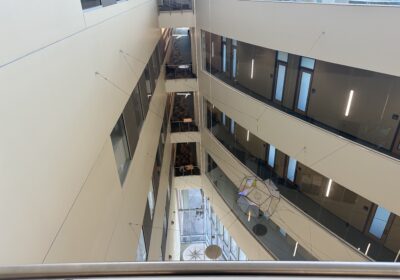Melting Greenland causes changing climate

SPECIAL TO THE ORACLE
Climate change has been a hot topic for presidential hopefuls this election season, with Florida Sen. Marco Rubio voicing skepticism of the science behind climate change being related to increased carbon emissions. Most recently, Pope Francis’ chief adviser said that Florida politicians have a duty to address the perils of climate change.
A change to Greenland — which may be caused by a changing climate, although researchers say it’s hard to tell whether the change is natural or caused by humans — caught the attention of researchers.
USF researchers worked with colleagues in Canada and the Netherlands to study the Atlantic Meridional Overturning Circulation (AMOC), an ocean current that circulates through a large part of the north Atlantic including around Greenland. They discovered a change in the current.
“We’ve been interested in melting Greenland for some time,” Tim Dixon, USF professor of geosciences, said. “Greenland was loosing mass so quickly that the land was actually rising and you could measure that with high precision GPS. From that we learned that not only was Greenland’s ice melting, but that every year it was accelerating.”
After this discovery, Dixon talked to some of his oceanography colleagues who said there’s been some concern that Greenland’s rapid melting rate would change the AMOC. Since freshwater is lighter than salt water, too much would disrupt what’s called the thermohaline circulation, which lets cooled water sink.
“If you put a bunch of freshwater in the north Atlantic, you interrupt that cycle,” Dixon said. “It’s been possible that this might happen sometime in the future, but what our data is hinting at is that interrupting the thermohaline circulation might actually be happening now … it would be an aspect of global warming that would be happening much faster than we thought.”
The freshwater flux from Greenland is composed of ice and tundra runoff. Up to 70 percent of the runoff ends up in the Labrador Sea, which the researchers said can lead to a decrease in the density of the water which would slow AMOC’s movement.
However, potential changes to Florida’s climate extend past this phenomenon to one that might be related. Dixon said it might be connected to a breakdown of the Gulf Stream causing sliding in Miami and Fort Lauderdale.
“Indirectly, we do depend on the existing pattern of ocean circulation that determines, in part, the sea level,” Dixon said. “For example, if the Gulf Stream weakens, some parts of the Eastern Sea Board might experience higher sea level … There is an increase in sliding in Miami and Fort Lauderdale; we’re not really sure what’s causing it, but a breakdown in the Gulf Stream is one possible cause.”






